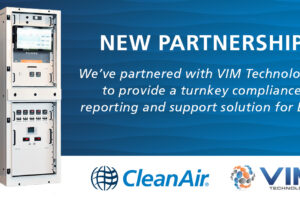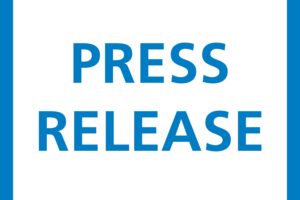On Monday, March 19, 2018, US EPA issued proposed amendments to the Refinery Sector Rule (RSR). These amendments are based on three petitions of reconsideration filed with the agency — two of these were joint submissions by the American Petroleum Institute (API) and the American Fuel and Petrochemical Manufacturers (AFPM) and the third from Earthjustice filed on behalf of several environmental groups.
The proposed changes to Subpart CC (Refinery MACT 1) are listed below. Changes to Subpart UUU (Refinery MACT 2) and Subpart Ja will be posted in a follow-up blog.
Definitions
1. Changing the definition of Flare Purge Gas to clarify that purge could be interpreted to include gases introduced to the flare for safety reasons other than to prevent oxygen infiltration.
2. Changing the definition of Flare Supplemental Gas to exclude added steam or air and include only gas that increases the heating value of the flare gas. Also, the definition clarifies that natural gas is not the only option for flare supplemental gas.
3. Adding a definition of Pressure Relief Device and revising the definition of Relief Valve and consistently using the term “pressure relief device” throughout the rule.
4. Revising the definition of Reference Control Technology for Storage Vessels to be consistent with the storage vessel rule requirements at 40 CFR 63.660.
Miscellaneous Process Vent Provisions
1. Add language to 40 CFR 63.643(c) to explicitly state that maintenance vents need not be identified in the NOCS report.
2. Amend 40 CFR 63.643(c)(1)(iv) to read (new text highlighted in bold): “If the maintenance vent is associated with equipment containing pyrophoric catalyst (e.g., hydrotreaters and hydrocrackers) and a pure hydrogen supply is not available at the equipment at the time of the startup, shutdown, maintenance, or inspection activity, the LEL of the vapor in the equipment must be less than 20 percent, except for one event per year not to exceed 35 percent.”
3. Amend 40 CFR 63.643(c)(1) to read: “Prior to venting to the atmosphere, process liquids are removed from the equipment as much as practical and the equipment is depressured to a control device meeting requirements in paragraphs (a)(1) or (2) of this section, a fuel gas system, or back to the process until one of the following conditions, as applicable, is met.”
4. Blind installation for maintenance… Require depressuring the equipment to 2 pounds (lb) per square inch gauge (psig) or less prior to equipment opening and maintaining the pressure of the equipment where purge gas enters the equipment at or below 2 psig during the blind flange installation. The low allowable pressure limit will reduce the amount of process gas that will be released during the initial equipment opening and ongoing 2-psig pressure requirement will limit the rate of purge gas use. Together, these requirements will limit the emissions during blind flange installation and will result in comparable emissions allowed under the existing maintenance vent provisions.
5. Documentation of each release from maintenance vents which serve equipment containing less than 72 lbs of VOC is not necessary, as long as there is a demonstration that the event is compliant with the requirement that the equipment contains less than 72 lbs of VOC. Revise 40 CFR 63.643(c)(1) to require a record demonstrating that the total quantity of VOC in the equipment based on the type, size, and contents is less than 72 lbs of VOC at the time of the maintenance vent opening.
6. Amend 40 CFR 63.644(c) to make clear that open-ended valves or lines that are capped and plugged sufficiently to meet the standards in NSPS subpart VV at 40 CFR 60.482-6(a)(2), (b) and (c), are exempt from the bypass monitoring in 40 CFR 63.644 (c).
Pressure Relief Device Provisions
1. Add the phrase — “affected pressure relief device”– to 40 CFR 63.648(j)(3)(v) to clarify that the requirements in (j)(3)(v) also apply only to releases from PRDs that are in organic HAP service.
2. Revise 40 CFR 63.648(j)(3)(ii)(A) to make clear that independent, non-duplicative systems count as separate redundant prevention measures.
3. Amend the reporting requirements at 40 CFR 63.655(g)(10) and the recordkeeping requirements at 40 CFR 63.655(i)(11) to retain the requirements to report and keep records of each release to the atmosphere through the pilot vent that exceeds 72 lbs/day of VOC, including the duration of the pressure release through the pilot vent and the estimate of the mass quantity of each organic HAP release.
Delayed Coking Unit Decoking Operation Provisions
1. Clarify provisions in 40 CFR 63.657(e) that the water overflow requirements in 40 CFR 63.657(e) are only applicable if the primary pressure or temperature limits in 40 CFR 63.657(a) were not met prior to overflowing any water. However, if water overflow is used before the primary pressure or temperature limits in 40 CFR 63.657(a) are met, then the owner or operator must use “controlled” water overflow until the applicable temperature limit is achieved.
2. Add provisions to 40 CFR 63.657(e) requiring the use of a separator or disengaging device operated in a manner to prevent entrainment of gases from the coke drum vessel to the overflow water storage tank. Gases from the separator must be routed to a closed vent blowdown system or otherwise controlled following the requirements for a Group 1 miscellaneous process vent.
Fenceline Monitoring Provisions
1. Proposing an alternative to the additional monitor siting requirement for pumps, valves, connectors, sampling connections, and open-ended lines sources that are actively monitored monthly using audio, visual, or olfactory means and quarterly using Method 21 or the AWP.
2. Clarify that if a root cause analysis was performed and corrective action measures were implemented prior to the exceedance of the annual average Δc action level, then these documented actions can be used to fulfill the root cause analysis and corrective action requirements in 40 CFR 63.658(g) and recordkeeping in 40 CFR 63.655(i)(8)(viii).
3. Revise reporting requirements so that quarterly reports are to cover calendar year quarters (i.e., Quarter 1 is from January 1 through March 31; Quarter 2 is from April 1 through June 30; Quarter 3 is from July 1 through September 30; and Quarter 4 is from October 1 through December 31) rather than being directly tied to the date compliance monitoring began.
4. Modify reporting requirements associated with collecting and analyzing QA/QC samples. First, require only one field blank per sampling period rather than two. Second, decrease the number of duplicate samples that must be collected each sample period. Instead of requiring a duplicate sample for every 10 monitoring locations, facilities with 19 or fewer monitoring locations are only required to collect one duplicate sample per sampling period and facilities with 20 or more sampling locations only be required to collect two duplicate samples per sampling period.
5. Require that duplicate samples be averaged together to determine the sampling location’s benzene concentration for the purposes of calculating Δc.
6. Revise the Table 6 entry for 40 CFR 63.7(f) to indicate that 40 CFR 63.7(f) applies except that alternatives directly specified in 40 CFR part 63, subpart CC do not require additional notification to the Administrator or the approval of the Administrator. Also, editorial revisions to the fenceline monitoring section; these proposed revisions are included in Table 2 in section III.A.7 of the preamble.
Flare Control Device Provisions
1. Allow owners or operators of flares whose only assist air is from perimeter assist air entrained in lower and upper steam at the flare tip and with a flare tip diameter of 9 inches or greater to comply only with the NHVcz operating limit. Steam-assisted flares with perimeter assist air and an effective tip diameter of less than 9 inches would remain subject to the requirement to account for the amount of assist air intentionally entrained within the calculation of NHVdil.
2. Add provisions to specify that owners or operators of these smaller diameter steam-assisted flares use the steam flow rate and the maximum design air-to-steam ratio of the steam tube’s air entrainment system for determining the flow rate of this assist air. Using the maximum design ratio will tend to over-estimate the assist air flow rate, which is conservative with respect to ensuring compliance with the NHVdil operating limit.
3. Include specific provisions for continuously monitoring fan speed or power and using fan curves for determining assist air flow rates.
4. Clarify that the initial 2-hour visible emissions demonstration should be conducted the first time regulated materials are routed to the flare.
5. Clarify at 40 CFR 63.670(h)(1) to provide that the daily 5-minute observations must only be conducted on days the flare receives regulated material and that the additional visible emissions monitoring is specific to cases when visible emissions are observed while regulated material is routed to the flare.
6. Clarify, at 40 CFR 63.670(o)(1)(iii)(B), that the owner or operator must establish the smokeless capacity of the flare in a 15-minute block average and at 40 CFR 63.670(o)(3)(i) that the exceedance of the smokeless capacity of the flare is based on a 15-minute block average.
7. Correct an error in the units for the cumulative volumetric flow used in the flare tip velocity equation in 40 CFR 63.670(k)(3).
8. Clarify that certification of compliance for these flare vent gas flow meter accuracy requirements can be made based on the typical range of flare gas compositions expected for a given flare.
Electronic Reporting and Other Corrections
1. Revise the introductory text in 40 CFR 63.660 to clarify that owners or operators of affected Group 1 storage vessels storing liquids with a maximum true vapor pressure less than 76.6 kilopascals (11.0 psi) can comply with either the requirements in 40 CFR part 63, subpart WW or SS and that owners or operators storing liquids with a maximum true vapor pressure greater than or equal to 76.6 kilopascals (11.0 psi) must comply with the requirements in 40 CFR part 63, subpart SS.
2. Clarify that the additional compliance time at 40 CFR 63.1063(a)(2)(ix) (Subpart WW) applies to the implementation of controls in 40 CFR 63.660(b) (Subpart CC).
3. Amend paragraphs 40 CFR 63.655(f) and 40 CFR 63.655(f)(6) to expressly provide that sources having a compliance date on or after February 1, 2016, may submit the NOCS in the periodic report rather than as a separate submission.
4. Clarify at 40 CFR 63.660(e) that the initial inspection requirements that applied with initial filling of the storage vessels are not required again simply because the source transitions from the requirements in 40 CFR 63.646 to 40 CFR 63.660.
5. Revise 40 CFR 63.655(f)(1)(i)(B)(3) and (C)(2), (f)(1)(iii), (f)(2), and (f)(4) to clarify that when the results of performance tests [or performance evaluations] are to be reported in the NOCS, the results are due by the date the NOCS report is due (report is due 150 days from the compliance date) whether the results are reported using the Compliance and Emissions Data Reporting Interface (CEDRI) or in hard copy as part of the NOCS report. If the source submits the test results using CEDRI, we are also proposing to specify that the source need not resubmit those results in the NOCS, but may instead submit specified information identifying that a performance test [or performance evaluation] was conducted and the unit(s) and pollutant(s) that were tested.
6. Add the phrase “Unless otherwise specified by this subpart” to 40 CFR 63.655(h)(9)(i) and (ii) to make clear that test results associated with a NOCS report are not due within 60 days of completing the performance test or performance evaluation.
7. Amend several references in Table 6–General Provisions Applicability to Subpart CC that discuss reporting requirements for performance tests or performance evaluations to recognize that performance test results may be written or electronic.
8. Revise the ERT Web site to clarify that electronic reporting is not required where the ERT does not support the test method for the pollutant of interest. This has implications where a particulate test and HCN test are conducted coincidentally. In this case, the PM test (supported by ERT) would be submitted through ERT while the HCN test (not supported by ERT) would be submitted in hard copy.
9. Revise 40 CFR 63.655(h)(10) to address the situation where an extension may be warranted due to a force majeure event, which is defined as an event that will be or has been caused by circumstances beyond the control of the affected facility, its contractors, or any entity controlled by the affected facility that prevents them from complying with the requirement to submit a report electronically as required by the rule.
10. Revise 40 CFR 63.655(i)(5) to include the subparagraphs (as previously codified in subparagraph (i)(4)) that were inadvertently not included in the published CFR.
11. Move the paragraphs at 40 CFR 63.655(h)(5)(iii) to 40 CFR 63.655(i)(3)(ii)(C).







